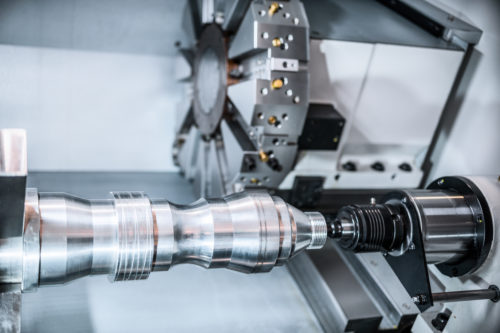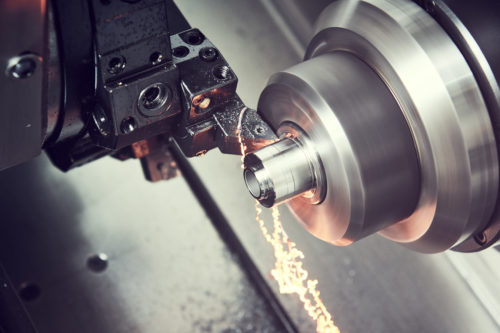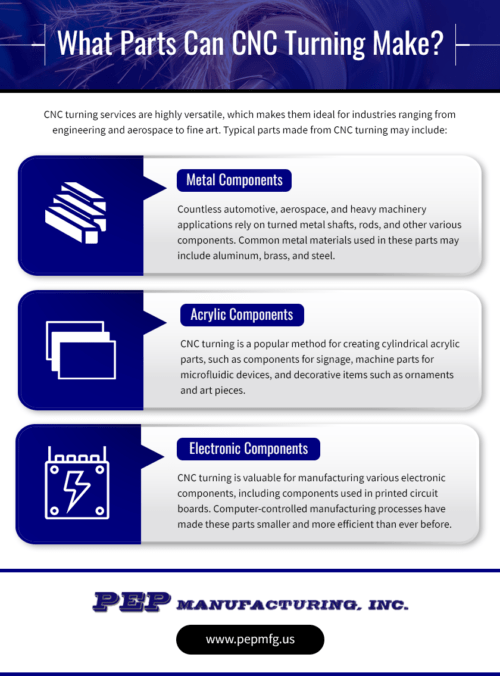
How Does CNC Turning Work?
In CNC turning, a cutting tool moves linearly in conjunction with a rotating workpiece. A lathe rotates the workpiece at high speeds, while the cutting tool gradually reduces the workpiece’s diameter in accordance with the specified part design. The CNC process is performed until the workpiece reaches the designated dimensions and forms a completed part.
There are four types of CNC turning: taper turning, straight turning, external grooving, and profiling. Each of these processes can produce different shapes, including conical, straight, grooved, or curved workpieces. Regardless of the specific process, turning typically uses single-point cutting tools that achieve sets of angles that are unique to each workpiece material. Most CNC turning centers and lathes can also accommodate tooling for additional secondary processes, such as boring and drilling.
What Parts Can CNC Turning Make?
CNC turning services are highly versatile, which makes them ideal for industries ranging from engineering and aerospace to fine art. Typical parts made from CNC turning may include:
- Metal components. Countless automotive, aerospace, and heavy machinery applications rely on turned metal shafts, rods, and other various components. Common metal materials used in these parts may include aluminum, brass, and steel.
- Acrylic components. CNC turning is a popular method for creating cylindrical acrylic parts, such as components for signage, machine parts for microfluidic devices, and decorative items such as ornaments and art pieces.
- Electronic components. CNC turning is valuable for manufacturing various electronic components, including components used in printed circuit boards. Computer-controlled manufacturing processes have made these parts smaller and more efficient than ever before.
CNC Turning Services from PEP Manufacturing
CNC turning produces a broad variety of high-quality parts and products, but it’s important to find the right provider to ensure quality and reliability. At PEP Manufacturing, we can provide reliable CNC turning services using state-of-the-art technology in conjunction with our skilled operators. When you turn to us, you’ll benefit from extensive quality management, reverse engineering, fast turnaround times, and certification for government contracts. We always work to put our customers first and have a long history of satisfied customers and repeat business.
If you would like additional information about our CNC turning services and other machining capabilities, please contact us with any questions or request a quote today.


